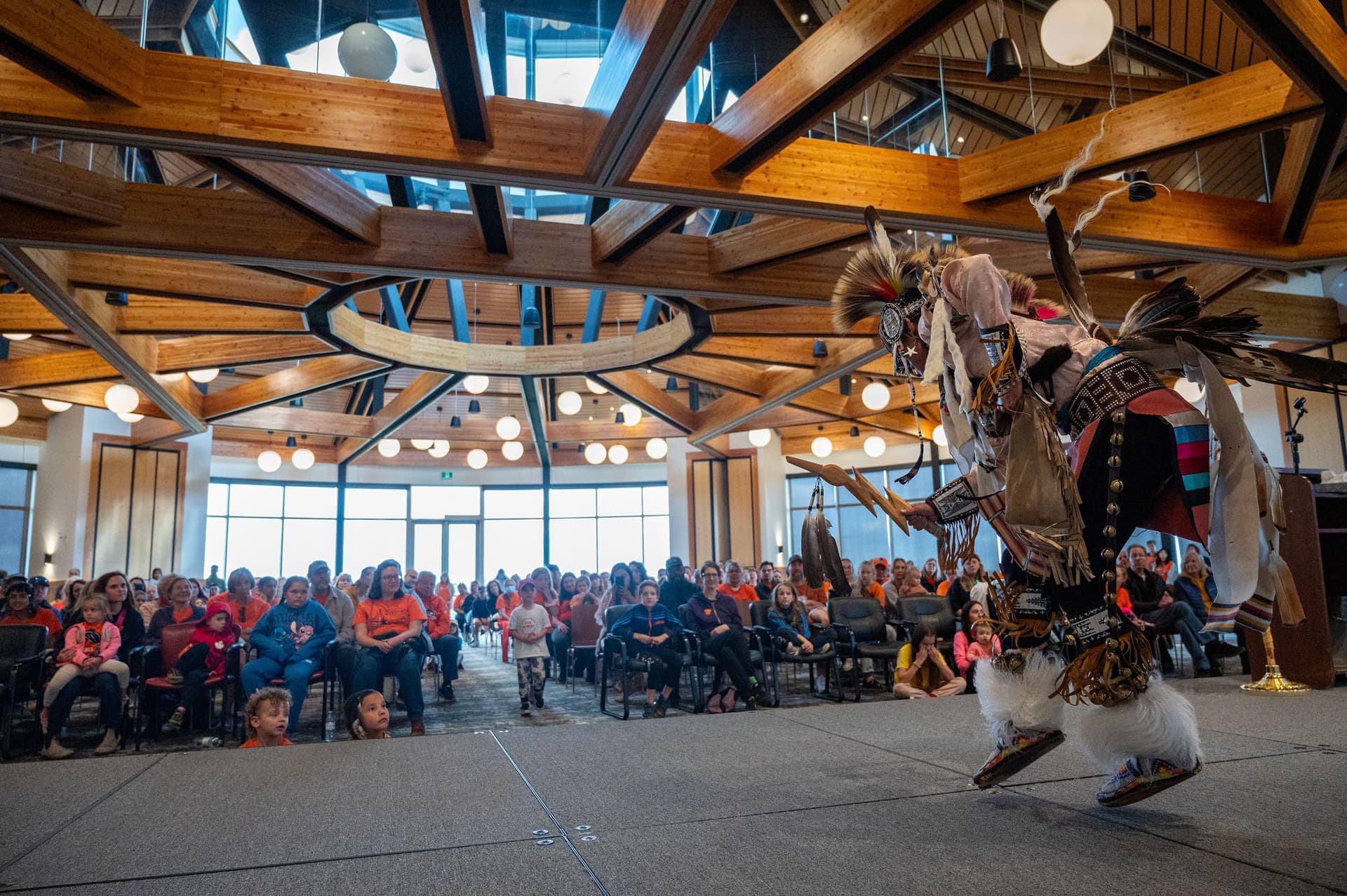On September 30th, people across the country will recognize National Day for Truth and Reconciliation. It will be the fourth year since the Parliament of Canada made the date a federal statutory holiday — permanently dedicating a full day to reflecting, remembering and learning.
Beyond using the day to confront the past, it’s also an annual opportunity to take stock of our collective progress on reconciliation. What have we accomplished — from Indigenous peoples to community leaders, from company executives to everyday Canadians — to help advance the cause of reconciliation?
I think about this often. In my role as the Chief of Fort McKay First Nation, it’s my job to advocate for my members’ best interests, and I’m often called on to talk about reconciliation. Whenever it’s raised, I stress the same two points.
First: reflection is critical. Looking back at the stories of mistreatment and abuse at residential schools — at the deliberate but failed attempt to erase culture, language and history — is a painful thing to do. It’s also a necessary step to restore the respect and dignity that former students always deserved, to recognize wrongs that went unacknowledged for too long, and to understand the repercussions that injustice is still having today.
That reflection is difficult. For those already making that effort, that reality makes my second point hard to hear: Reflection isn’t enough.
Put simply, we must also do the work — take tangible steps so that Indigenous peoples have the tools to overcome the impact of the past, create better lives for themselves, and build brighter futures for their children.
Economic reconciliation is a key marker of that progress. Today, are Indigenous people able to achieve the same prosperity that, for generations, so many others across Canada been able to create for themselves? So far, the answer is no.
I have faith that any human being who hears a former residential school student tell their story would support the moral reasons for working towards reconciliation. But this past year, events beyond Canada’s borders have added a new dimension: they’ve underlined the practical reasons for prioritizing it.
Starting nine months ago, the trade threats from the U.S. turned all our assumptions about the economy upside down, put everyone’s financial security into question, and cast a shadow over the future prosperity of Canada and its residents.
Political leaders from coast to coast to coast recognized the turning point and have been working to chart a new path — knocking down trade barriers at home, finding new partners for Canadian resources and goods, and figuring out how to route them to new customers around the world. It’s an enormous effort that will require massive new infrastructure, much of which will cross Indigenous lands. For leaders, the future we’re responsible for building for our communities hangs in the balance. And truthfully, Canada can only succeed if Indigenous peoples succeed.
There are some encouraging signals for all of us. Provincial and federal leaders across party lines have collaborated in common cause, highlighted the need to work with Indigenous peoples, and made gestures of goodwill to one another. The federal Indigenous Loan Guarantee Program, a tool that Indigenous leaders had long called for and which will help First Nations have a financial investment in many of these new major projects, was doubled.
But even as we all recognize the threat in front of us, and of the importance of getting the solution right under serious pressure, our path out of the turmoil isn’t certain.
In late July, I flew to Ottawa to join fellow Chiefs at the Prime Minister’s First Nations’ Summit. At the meeting, I shared my members’ priorities with a full room, forged new relationships, and had promising conversations with government leaders. I left feeling encouraged, but cautious. The reaction from other Chiefs was mixed. In his opening remarks that day, even Prime Minister Carney himself acknowledged the gap in trust between Indigenous peoples and the Government of Canada.
In the spirit of the day, we need to be truthful: closing the trust gap between Indigenous peoples and government will be a big job. To make progress, there needs to be a shared commitment — to not only confront the immediate economic problem, but to address Indigenous priorities that have been outstanding for too long. Addressing those lingering Indigenous concerns is critical — leaving them unresolved is why trust in government eroded to where it is today. There will be no shortcuts, the work will be difficult, and it’s Ottawa and First Nations leaders who must work together to get it done.
But everyone can play a role in encouraging progress.
So, to mark September 30th this year, I am asking everyone across Canada: what one action will you take this year to advance reconciliation?
Reflection is important, but it must be accompanied by action — and there’s no time more important to make progress on it than right now. All of our futures depend on it.
Raymond Powder is the Chief of Fort McKay First Nation, in Northern Alberta.
The views, opinions and positions expressed by all iPolitics columnists and contributors are the author’s alone. They do not inherently or expressly reflect the views, opinions and/or positions of iPolitics.

